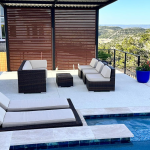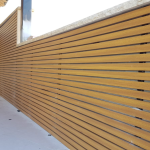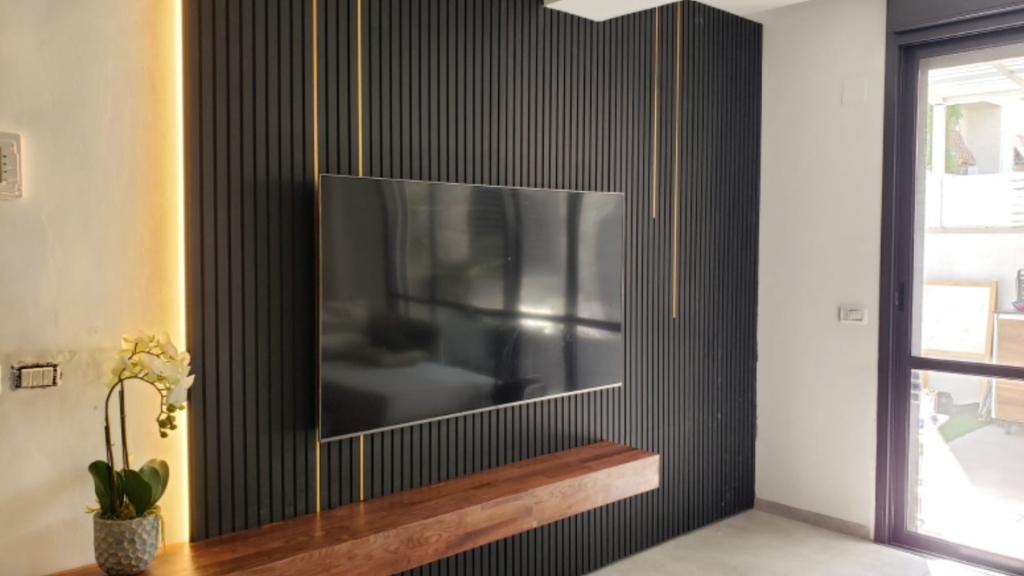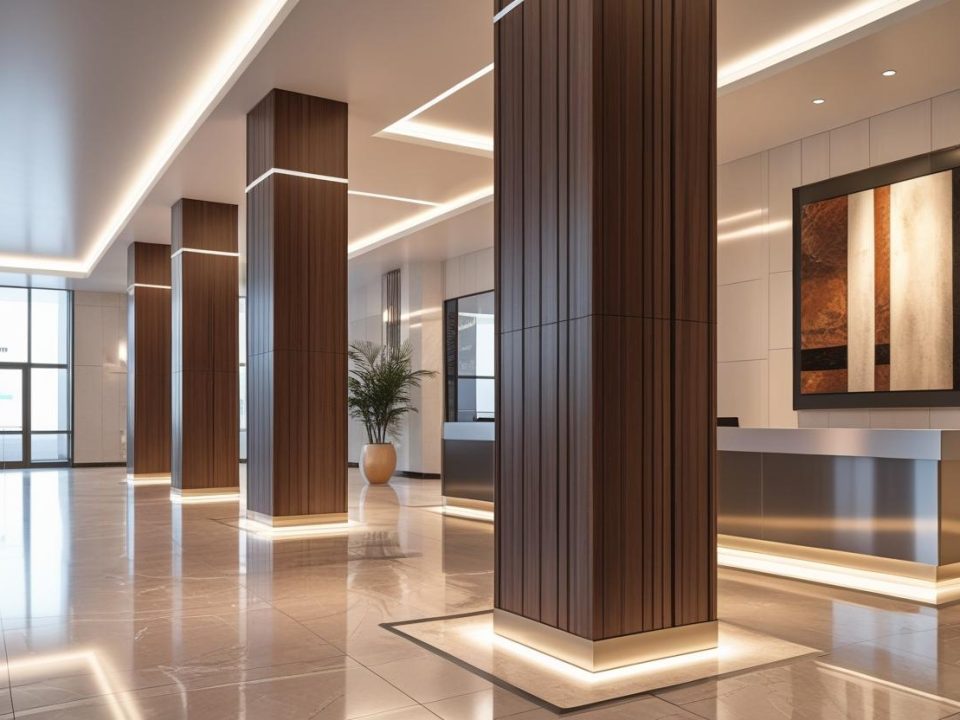
Installation Tips for Aluminum Cladding: A Step-by-Step Guide

The Science Behind Aluminum Cladding’s Fire Resistance Capabilities

In today’s construction world, the push towards eco-friendly buildings is more than just a trend; it’s a necessary shift to reduce environmental impact and enhance sustainability. One significant way to achieve this is through the materials used in building construction, such as aluminum cladding.
The construction industry’s focus on eco-friendly buildings reflects the growing realization that sustainable practices are not just good for the environment but are crucial for the long-term viability of the industry itself.
The environmental impact of traditional building methods and materials has led architects, builders, and engineers to seek new approaches that align with sustainable goals. Aluminum cladding has emerged as a key player in this movement due to its unique properties that support both sustainability and building performance.
One of the primary advantages of aluminum cladding is its exceptional durability and lightweight structure. Its natural resistance to corrosion makes it suitable for a variety of climates, reducing the need for frequent maintenance and replacements, which, in turn, minimizes waste.
The lightweight nature of aluminum reduces the energy required for transportation and installation, contributing further to its eco-friendly profile. Moreover, its recyclability sets it apart; aluminum can be recycled indefinitely without degrading its quality.
This closed-loop recycling process dramatically cuts down on energy consumption compared to the production of virgin aluminum, effectively reducing the carbon footprint of the construction process.
Aluminum cladding’s contributions to achieving LEED (Leadership in Energy and Environmental Design) ratings are substantial.
Buildings utilizing this material can earn points in multiple LEED categories, including energy efficiency, materials and resources, and indoor environmental quality.
For instance, the reflective properties of aluminum panels help maintain cooler interior temperatures by reducing heat absorption, thereby lessening the need for air conditioning and contributing to optimized energy performance. Furthermore, the use of recycled aluminum can contribute points to the materials and resources category by minimizing the environmental impact associated with raw material extraction.
The innovative designs of modern aluminum cladding systems also help reduce construction waste and enhance a building’s thermal performance, making them an essential tool for eco-conscious architects and builders.
Known for its durability and lightweight nature, aluminum cladding stands out not only for its practical benefits but also for its contributions to sustainable building practices, particularly in achieving LEED (Leadership in Energy and Environmental Design) ratings.
The Sustainability of Aluminum Cladding
Aluminum is celebrated for being infinitely recyclable. This characteristic makes it a stellar candidate for eco-friendly building materials, as it can be recycled repeatedly without losing quality.
This process conserves energy and reduces the overall carbon footprint. Aluminum’s lightweight nature also plays a crucial role in reducing the energy consumed during transportation and installation, further enhancing its green credentials.
Aluminum’s inherent recyclability is one of its most compelling environmental benefits. Unlike many materials that degrade after repeated recycling, aluminum can be recycled infinitely without losing quality, making it a true circular economy material.
This process requires just 5% of the energy needed to produce primary aluminum from bauxite ore, drastically reducing the industry’s energy consumption and greenhouse gas emissions.
In fact, according to the International Aluminum Institute, recycling aluminum saves over 90 million tons of CO2 annually worldwide. This aligns perfectly with eco-friendly building goals, where minimizing a project’s carbon footprint is paramount.
Another aspect of aluminum cladding’s sustainability is its lightweight nature. Weighing substantially less than many other construction materials, aluminum panels reduce the energy consumption required for transportation, especially over long distances.
They also ease the structural load on buildings, which can lower construction costs and make installation more efficient. These factors make aluminum a practical and sustainable choice, whether for renovating existing structures or constructing new buildings with minimal environmental impact.
Moreover, aluminum cladding systems are designed with modularity and flexibility in mind, reducing waste and ensuring optimal material usage. Builders can precisely cut and fit panels to a building’s dimensions, reducing offcuts and leftover material that would otherwise contribute to landfill waste.
Additionally, aluminum’s corrosion resistance allows it to maintain its appearance and functionality over time without frequent replacements or refinishing. This longevity directly translates into reduced maintenance costs and a decreased need for resources, further bolstering aluminum cladding’s eco-friendly credentials.
Aluminum Cladding and LEED Ratings
LEED ratings are a globally recognized symbol of sustainability achievement in the building industry. They evaluate various aspects of environmental health, from water efficiency and energy use to material selection and indoor environmental quality. Aluminum cladding can significantly contribute to a building achieving a higher LEED rating in several ways:
Energy Efficiency: Aluminum reflects heat and light, which helps in reducing the energy needed for heating and cooling the building. This characteristic can contribute to LEED credits related to optimizing energy performance.
Material Resources: Using recycled aluminum helps earn points in LEED’s materials and resources category. Products like aluminum cladding often contain a high percentage of post-consumer recycled content, which is a plus in LEED evaluations.
Indoor Environmental Quality: Aluminum cladding systems can also impact the indoor environmental quality by supporting strategies that reduce pollutants and enhance occupant comfort.
Innovation in Design: Aluminum cladding systems, especially those that are part of innovative building solutions, can contribute to LEED points under the Innovation in Design category. These systems offer solutions like improved thermal efficiency and reduced construction waste.
Real-World Applications and Benefits
Companies like BAMCO emphasize that their aluminum panel systems are designed not only to meet but exceed LEED standards. They offer products that maximize the use of recycled content and focus on long-term sustainability, which aligns with LEED’s goals for environmental and human health.
Moreover, the practical applications of aluminum in buildings extend beyond just cladding. It’s used in window frames, facades, and other elements that contribute to the building’s overall energy efficiency and sustainability credentials.
Conclusion
Choosing aluminum cladding for your next project could be a significant step toward building a more sustainable, LEED-certified building. As the construction industry continues to evolve, the focus on materials that offer both environmental and economic benefits is paramount. Aluminum’s role in this shift is crucial due to its sustainability, efficiency, and contribution to green building standards.
For those looking to dive deeper into the specifications of aluminum cladding or to discuss a project, exploring resources from industry leaders and associations can provide further insights and tailored solutions. This proactive approach ensures your project not only supports global sustainability efforts but also achieves new heights in building performance and design aesthetics.
Learn more about aluminum and sustainability from the Aluminum Association and discover how aluminum contributes to LEED ratings on AEC. For practical applications and products, BAMCO’s sustainability practices provide a comprehensive look at how aluminum panels are used in eco-friendly buildings.
If you’re contemplating cladding for your home’s interior design, connect with us at GTO Aluminum Manufacturing.




